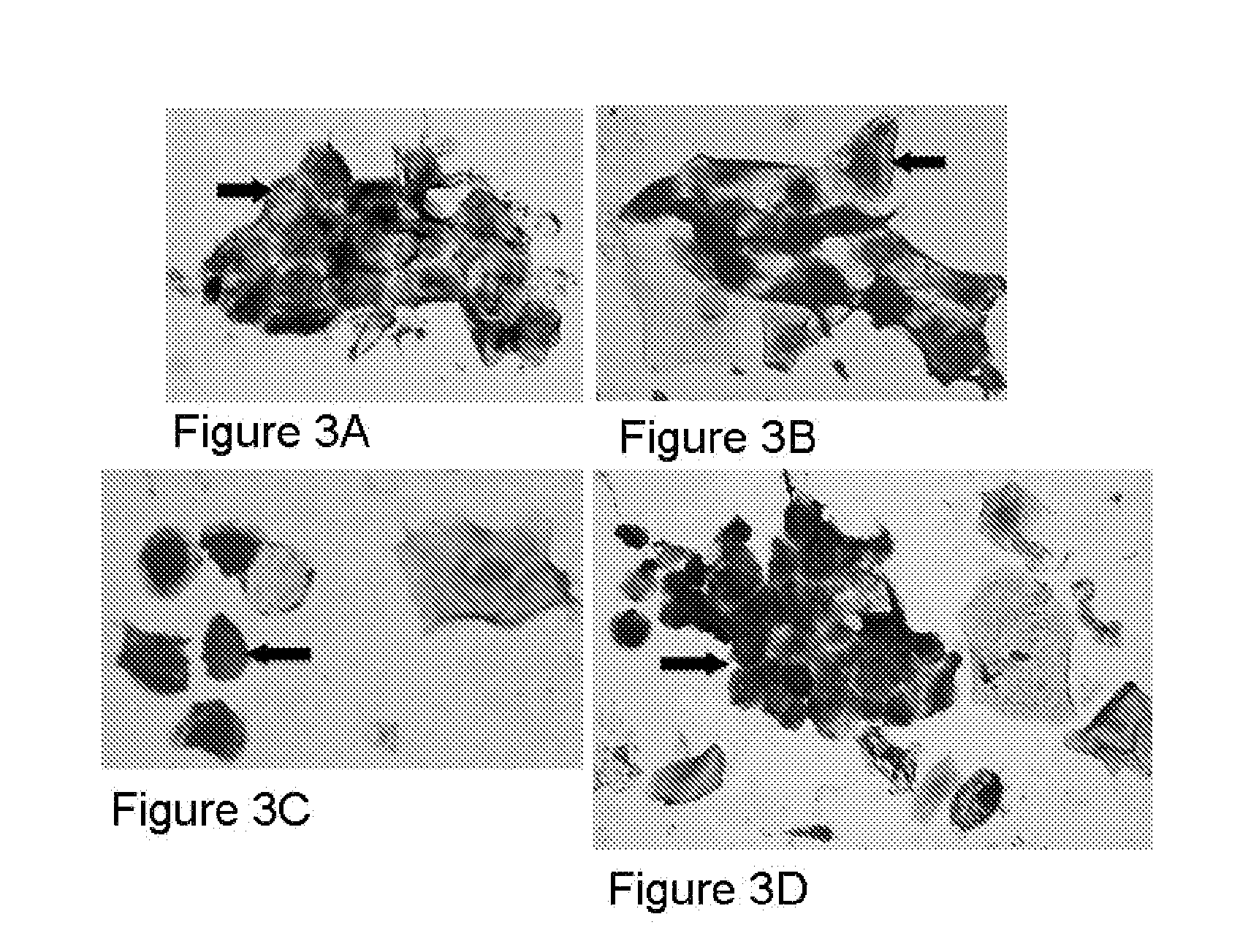Identification of high grade or >= cin2 for early stages and late stages detection, screening, and diagnosis of human papillomavirus (HPV) and hpv-associated cancers
- Summary
- Abstract
- Description
- Claims
- Application Information
AI Technical Summary
Benefits of technology
Problems solved by technology
Method used
Image
Examples
example 1
Detailed Example 1
[0097]Some embodiments are directed to monoclonal antibodies against HPV proteins. Obtaining high quantity of purified recombinant HPV proteins in native conformation as immunogen becomes the first critical step in generating antibodies specific for detecting HPV proteins in clinical samples. E6 and E7 is known to be very difficult to isolate and purify due to undesirable aggregation during protein purification, protein instability, low levels of expression, and low immunogenic responses of purified proteins. We have overcome the technical barriers to produce HPV E6 and E7 recombinant protein in a non-denatured, soluble form. To demonstrate that the purification method that we have developed results in a conformation closely approximating the native form to bind the anti-HPV antibodies, we have used the HPV infected cervical samples (high risk-HPV positive by PCR) that contain human HPV antibody to test the purified recombinant HPV proteins. Studies of using such p...
example 2
Detailed Example 2
Immunocytochemistry Assay (ICC)
[0103]Some embodiments are directed to immunoassay comprising the detection of HPV proteins and cellular proteins in exfoliated cervical cells. Sample preparation: The cervical scrape cells collected from liquid based solution were divided into two parts, one for cytological Papanicolaou staining, and another one for immunocytochemical staining using HPV antibodies described in some embodiments. In the Pap smear results, Papanicolaou staining samples were scored 0-17. Score one (1) to three (3) are considered as normal, and score four (4) and above as abnormal. Interpretation of Pap smear reports can be challenging at times. Based on the Bethesda 2001 system, negative Pap smear may include negative intraepithelial lesion or malignancy, and abnormal Pap smear may include different stages of squamous cells in development of dysplasia or lesions. For examples, LSIL: Low grade of Squamous Intraepithelial Lesion, HSIL: High grade of Squamo...
example 3
Detailed Example 3
Immunohistochemistry Assay (IHC)
[0135]Some embodiments are directed to a method of screening a human subject of Papillomavirus infection includes providing a thin section containing one or more kinds of tissue cells from a clinical tissue sample of the human subject, applying the thin section on a slide, conducting one or more immunohistochemical assays on the slide containing the thin section of the clinical tissue sample, staining the thin layer of human cells using one or more antibodies generated against one or more purified recombinant Papillomavirus proteins, wherein at least one antibody is capable of recognizing a Papillomavirus early protein, and detecting in situ one or more proteins from one or more Papillomavirus types present in the thin section of the clinical tissue sample on the slide.
[0136]Sample preparation: Paraffin tissues blocks sectioned into 4 microns were placed on slide and baked at 60° C. overnight. Deparaffin / hydrate sections were unmaske...
PUM
 Login to view more
Login to view more Abstract
Description
Claims
Application Information
 Login to view more
Login to view more - R&D Engineer
- R&D Manager
- IP Professional
- Industry Leading Data Capabilities
- Powerful AI technology
- Patent DNA Extraction
Browse by: Latest US Patents, China's latest patents, Technical Efficacy Thesaurus, Application Domain, Technology Topic.
© 2024 PatSnap. All rights reserved.Legal|Privacy policy|Modern Slavery Act Transparency Statement|Sitemap



